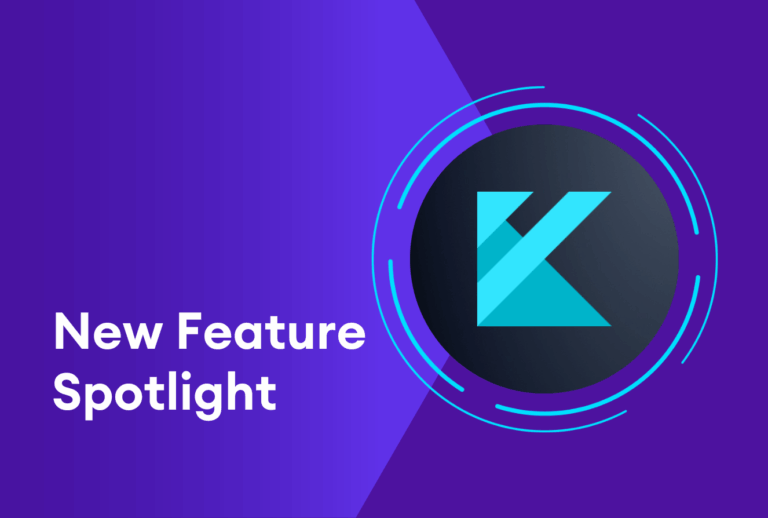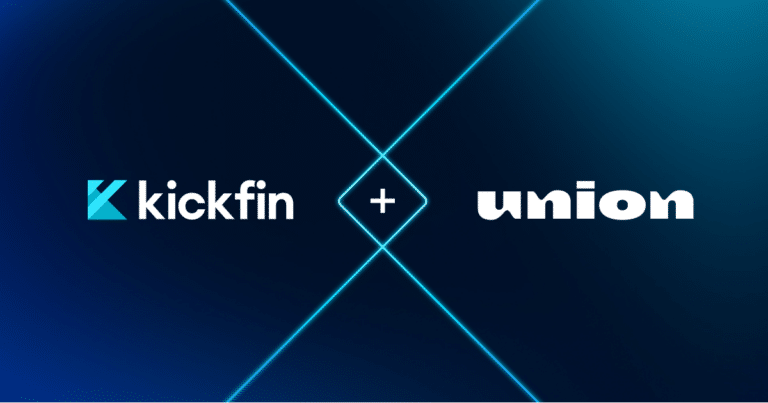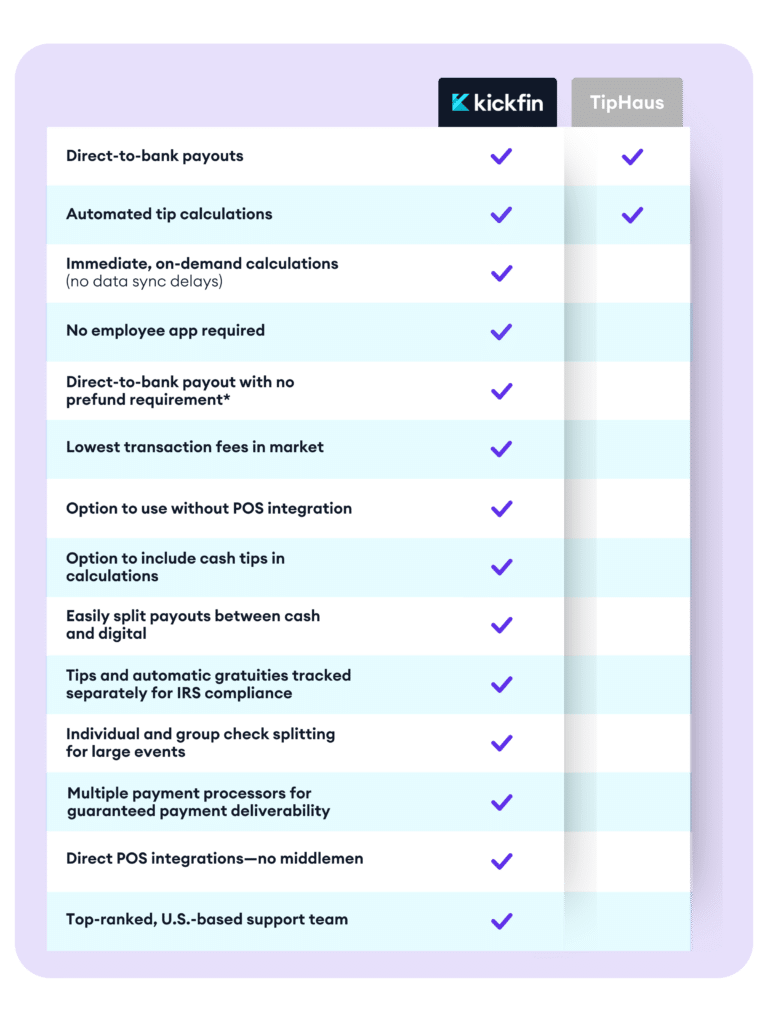In the hospitality world, cashless payments now make up an overwhelming majority of sales. That means most restaurant guests are paying for meals either with credit cards or some form of digital payment (e.g., Apple Pay), and hotel guests are looking for cash-free alternatives to tip hospitality staff. The pandemic only accelerated this trend — making the need for digital tipping options more pronounced than ever before.
To be fair, restaurants and bars are also driving the increase in cashless transactions. Many brands now offer online ordering, and we’re seeing a rapid roll-out of mobile apps in recent years — which means, of course, that more customers are paying (and tipping) online.
Operating with little to no cash on hand has its perks, but it presents a major problem when it comes to paying out tips to employees. Many restaurants and bars have already switched to digital tip payouts — but for those that haven’t, now’s definitely the time.
Here’s everything you need to know about digital tipping and how to choose the right solution for your establishment.
What Does Digital Tipping Mean?
In hospitality, digital tipping, or digital tip payments, is the digital transfer of tip payments from one party to another. This can happen in two different ways:
- A consumer digitally tips a service worker. This transaction is facilitated by tip acceptance software. For example, a hotel guest might scan a QR code or click a link in order to tip their bellhop on the spot.
- An employer digitally pays out tips to their employees. This is facilitated by tip distribution or tip disbursement software. That means at the end of a shift, business day, or any designated pay period, employees receive their tips digitally. In other words: instead of paying out your bartenders, servers, and other floor staff in cash tips, you distribute tips instantly and electronically.
What is a Digital Tipping Solution?
Right now, there are two primary ways that employers can instantly and digitally pay out tips to their employees:
- Pay cards: Also known as prepaid cards or payroll cards, pay cards are like debit cards in some ways. At the end of a shift, managers digitally load tips onto their employees’ cards. Technically, they’re “instant” — but unfortunately, prepaid cards can be problematic for restaurants. For one thing, these cards typically come with fees. They’re also not accepted by all vendors or at ATMs, and it can take days for funds to transfer from pay cards to employee bank accounts.
- Instant tip payment platform: This is the “gig economy” approach to paying out tips. Much like Uber instantly pays its drivers, an instant tip payment platform allows managers to send tips to their employees’ bank accounts in real time. (It’s even faster than Venmo or PayPal, which put a hold on funds; with an instant tip payment solution, the money goes directly to employees’ accounts, no detours or waiting required.)
For the purposes of this article, when we talk about digital tipping solutions, we’re focusing on tip distribution software.
How Do Restaurants Pay Out Credit Card Tips?
Traditionally, restaurants and bars have paid out credit card tips in cash. At the end of a shift, managers would total each employee’s tips from credit card sales and pay them out based on their reported sales for that shift. The total amount of tips would be pulled out of the register or safe and divided up accordingly.
However, with an increasing number of customers paying with credit cards or digital payments, paying out tips in cash has become more difficult and time-consuming. Not only does it require restaurants to keep cash on hand that’s often not needed to fund their normal operations — but it also opens the door for potential discrepancies or errors when dividing up tips.
Enter digital tipping solutions, which eliminate the need for managers to handle and distribute cash tips. Instead, with tip distribution software, managers are increasingly able to track and pay out credit card tips electronically, saving time and headaches.
What are the Advantages of Digitally Tipping Out Your Employees?
When you digitally pay out your employees (instead of cash or payroll tips), everyone benefits: your employees, your managers, and your business. There are seven key benefits to making the switch to digital tip payments.
1. Cash Shortage Problem, Solved
As we move toward an increasingly cashless society, the cash shortage problem is one of the most compelling reasons to switch to digital tip payouts. For many restaurants, bars, and hotels, the pandemic was a major turning point: The percentage of credit card and digital transactions rapidly increased, meaning employers often didn’t have enough cash on hand to pay out tips at the end of the day or shift.
The great thing about digital tip payouts: you never have to worry about having enough cash in the safe at the end of a shift.
That means no more bank runs — giving your managers hours back in their week. And if you’ve resorted to paying for pricey armored car services? That’s an expense you can cut: Using a digital tip payout solution is only a small fraction of that cost.
2. Instant Access to Earnings
Many employees enter the hospitality workforce because of the promise of daily payouts. That’s been the industry standard for years — but given the cash shortages noted above, it’s increasingly difficult to ensure employees get their earnings at the end of every shift.
As a result, some employers pay out cash less frequently or make a drastic org-wide shift to payroll tips. But that can be problematic for employees who can’t afford to wait days or weeks for their pay.
Digital tipping solves cash management headaches while giving your employees the instant access to earnings that they expect and deserve.
As an added bonus, when you distribute tips digitally, the funds go directly to your employees’ bank accounts, wherever they bank, which promotes financial responsibility. Yes, earnings are immediately accessible — but your employees are less likely to make impulsive purchases when their money is in the bank, not on their person.
3. The Power of Choice
While instant, direct-to-bank tip-outs are often the best option for restaurant teams, it’s important to keep your employees in the driver’s seat when it comes to how they’re paid.
As noted above, some restaurants have dealt with a low-cash environment by switching from cash tips to payroll tips. And while payroll has its perks (e.g., low administrative burden), a unilateral change that causes financial strain can negatively impact recruiting, retention, and workplace culture.
On the flip side of that, you might have employees who are unbanked, meaning pay cards are the best cashless option.
The right digital tipping solution prioritizes flexibility, so you can give your employees options for how they receive their cashless tips without creating extra administrative burdens for you (or your bookkeeper).
4. Competitive Hiring Advantage
For years now, hospitality employers have faced a tough labor market. It’s always been hard to find and retain good talent — and now, with gig economy employers on the scene (think: Uber, DoorDash), it’s even more challenging.
Offering instant, cashless tip-outs is one of the best ways to stay competitive not only with other restaurants and hotels but also with the Ubers of the world.
As the hospitality industry continues to bounce back, those employers that offer digital tipping have found that it’s a useful recruiting tool and a true long-term retention play that’s “stickier” than one-time signing bonuses and other hiring gimmicks.
5. Reduce Liability and Room for Error
If you’re making bank runs or having cash delivered to your restaurant in order to distribute cash tips, you’re at a higher risk of theft and skimming. Plus, counting, recounting, and distributing cash leaves room for human error — and can lead to tip disputes, which aren’t fun for anyone. Digital tip outs solve all of these issues.
On top of preventing counting errors, digital tipping solutions can put up guardrails to prevent improper tip pooling practices. Restaurants and bars have a lot of tipping laws to keep up with — and these laws are almost always in flux. With software like Kickfin, you can stay in compliance with federal, state, and local tip laws, no matter where you live.
6. Keep Your Employees Safe
While digital tipping protects businesses from theft, it can keep your employees safer, too.
Many hospitality workers leave their shifts late at night with a pocketful of cash — making them incredibly vulnerable. Unfortunately, it’s not uncommon to hear stories of unsuspecting employees getting mugged (or worse) after closing up.
While there’s a larger conversation to be had about ensuring the general safety of employees, making the switch to digital tips ensures your people aren’t walking out of your establishment in the wee hours of the morning with wads of cash in their wallets.
7. Save Time and Money
Digital tip payouts save restaurants time and money. They don’t require counting, recounting, and distributing tips, giving managers hours back in their weeks. And because there’s little admin work required, checking out at the end of a shift becomes much faster and more streamlined, reducing labor costs.
Digital tipping also solves for one of the hidden costs of cash tips: often, managers don’t have exact change on hand and they’ll round up to the nearest dollar. When that happens for every employee, after every shift, every day — well, it adds up. Digital tip payouts are always the exact amount an employee is owed, not a penny less or a penny more.
How Do You Choose a Digital Tip Payout Solution?
There are a couple of different options when it comes to digital tip payout solutions.
Pay Cards
Pay cards are one way to go when exploring digital tip payout solutions. A lot like debit cards, managers issue pay cards to employees and digitally transfer funds via an integrated software system at the end of each shift or pay cycle.
The money stays on the card and can be spent using the card itself or deposited into employees’ bank accounts. Or they can even withdraw money from it, just like an ATM card.
While pay cards might seem like a solid low-cost solution for employers, there are some major drawbacks to pay cards that put your employees at a disadvantage. Reasons to avoid pay cards include:
- Hidden fees
- Long transfer times
- Low vendor acceptance
- Fewer regulations
(For more information on why pay cards might not be the best option for your restaurant, see why Rock N Roll Sushi switched from pay cards to Kickfin’s digital tipping solution.)
Instant Tip Payment Platform
Another digital tip payout solution is Kickfin. In fact, it’s the #1 tip distribution software on the market.
Hospitality employers can set up Kickfin in one day — and it integrates with software you’re already using. Once you’ve uploaded your employees into the Kickfin portal, they can choose to enroll either by text message or email in seconds. Tips are transferred directly into their bank accounts instantly at the end of every shift, so there’s no more waiting hours (or days) to get what they’re owed.
The Kickfin platform is also a breeze to manage. You can add, remove, or edit employee information easily. Reporting features offer innovative tracking with the ability to roll up payments made over time across locations. Kickfin is safe and secure, meaning we’re 100% PCI compliant. Employees never have to share their personal banking information because it’s not stored in the system. And when you need reporting, download information seamlessly into a .csv file for easy EOY filing.
Make the Switch to Digital Tipping
Leveraging a digital tipping solution is a no-brainer. The key, of course, is choosing the right digital tipping platform for your business.
To see why restaurants and bars across the country are switching to Kickfin, check out some of our favorite success stories. Or better yet, get in touch and we’ll walk you through a personalized demo of our platform.






